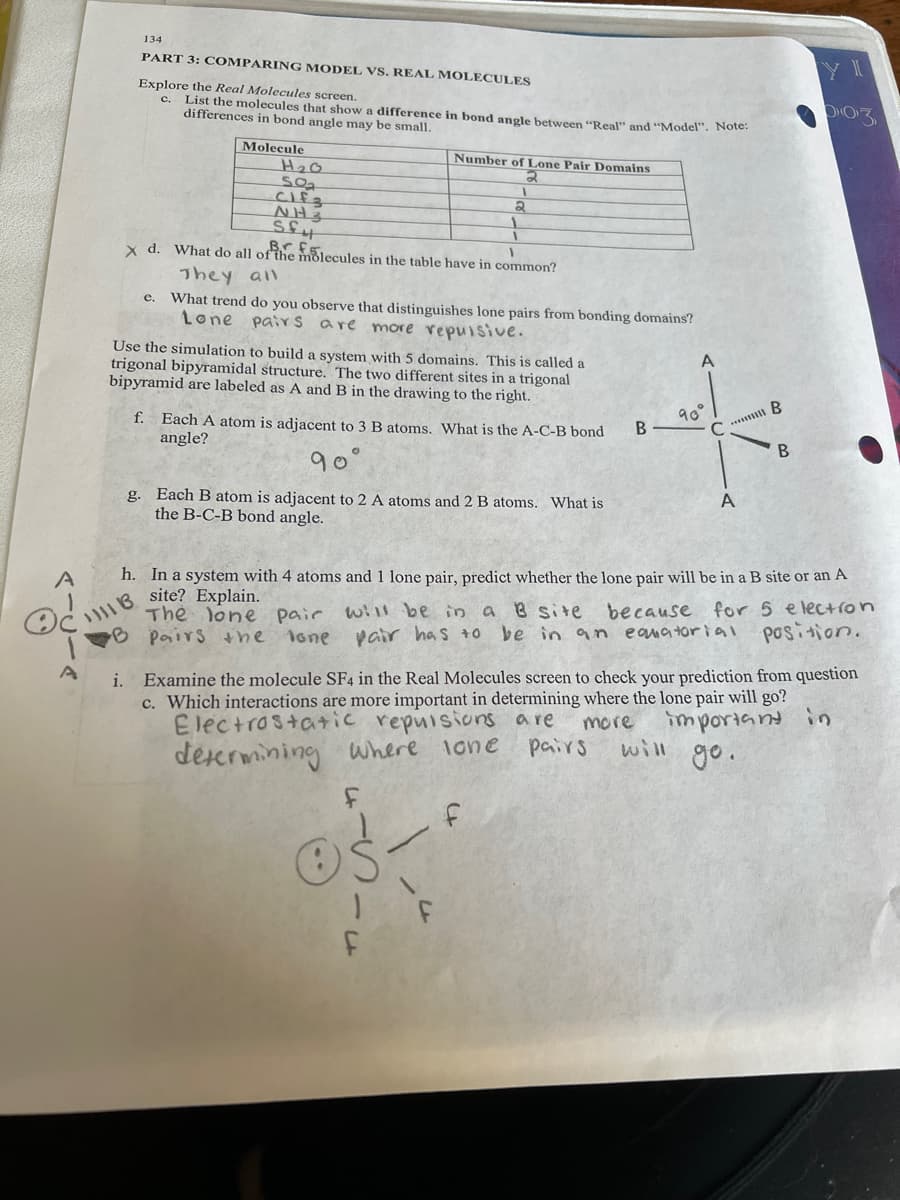PART 3: COMPARING MODEL VS. REAL MOLECULES Explore the Real Molecules screen. C. List the molecules that show a difference in bond angle between "Real" and "Model". Note: differences in bond angle may be small. Molecule H₂0 Soa CIE3 NH3 SE4 Number of Lone Pair Domains 2 1 x d. What do all of the molecules in the table have in common? They all 1 2 e. What trend do you observe that distinguishes lone pairs from bonding domains? Lone pairs are more repulsive. sive. 1 Use the simulation to build a system with 5 domains. This is called a trigonal bipyramidal structure. The two different sites in a trigonal bipyramid are labeled as A and B in the drawing to the right. f. Each A atom is adjacent to 3 B atoms. What is the A-C-B bond angle? 90° g. Each B atom is adjacent to 2 A atoms and 2 B atoms. What is the B-C-B bond angle. G F 1 n B A 90° will C ****** A h. In a system with 4 atoms and 1 lone pair, predict whether the lone pair will be in a B site or an A site? Explain. 116 The lone pair will be in a B site because for 5 election B Pairs the lone pair has to be in an equatorial position. B i. Examine the molecule SF4 in the Real Molecules screen to check your prediction from question c. Which interactions are more important in determining where the lone pair will go? more important in Electrostatic repulsions are determining where lone pairs go. B YI 003
Formal Charges
Formal charges have an important role in organic chemistry since this concept helps us to know whether an atom in a molecule is neutral/bears a positive or negative charge. Even if some molecules are neutral, the atoms within that molecule need not be neutral atoms.
Polarity Of Water
In simple chemical terms, polarity refers to the separation of charges in a chemical species leading into formation of two polar ends which are positively charged end and negatively charged end. Polarity in any molecule occurs due to the differences in the electronegativities of the bonded atoms. Water, as we all know has two hydrogen atoms bonded to an oxygen atom. As oxygen is more electronegative than hydrogen thus, there exists polarity in the bonds which is why water is known as a polar solvent.
Valence Bond Theory Vbt
Valence bond theory (VBT) in simple terms explains how individual atomic orbitals with an unpaired electron each, come close to each other and overlap to form a molecular orbital giving a covalent bond. It gives a quantum mechanical approach to the formation of covalent bonds with the help of wavefunctions using attractive and repulsive energies when two atoms are brought from infinity to their internuclear distance.

Trending now
This is a popular solution!
Step by step
Solved in 4 steps









